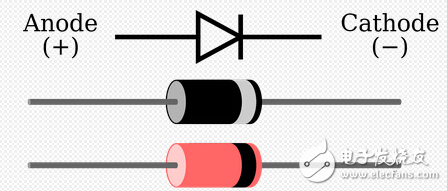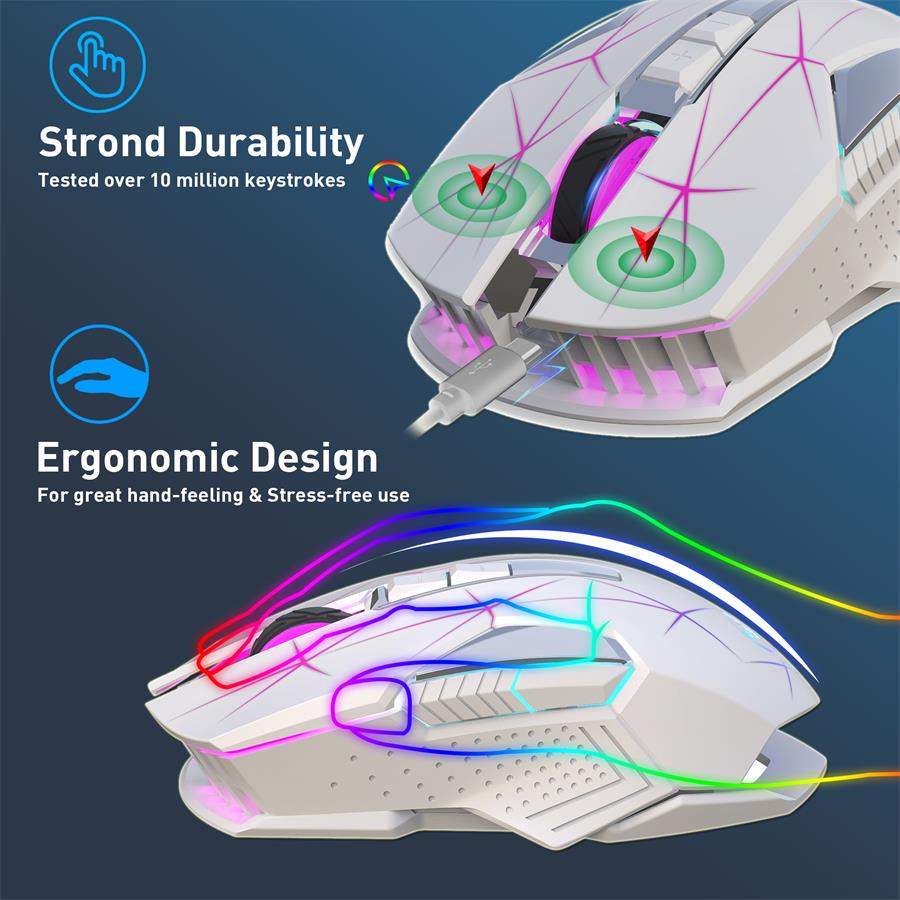The power of analog electronics is strong, and it is especially important to consolidate the foundation. Let's take a look at 100 questions together.
1. Is a hole a kind of carrier? Is the electron moving when the hole is conducting?
A: No, but in its movement it can be equivalent to a carrier. When the hole is conductive, the electrons of the same amount move in the opposite direction.
2. What ratio is generally doped in the intrinsic semiconductor when preparing an impurity semiconductor?
A: Incorporate in a ratio of one-millionth.
3. What is an N-type semiconductor? What is a P-type semiconductor? What happens when two semiconductors are made together?
A: Most semiconductors whose carriers are free electrons are called N-type semiconductors. Conversely, a semiconductor in which most carriers are holes is called a P-type semiconductor. When the P-type semiconductor is bonded to the N-type semiconductor, a PN junction is formed.
4. What are the main physical characteristics of the PN junction?
A: Unidirectional conductivity and more sensitive temperature characteristics.
5. What are the characteristics of semiconductor device manufacturing electronic devices compared with traditional vacuum electronic devices?
Answer: The frequency characteristics are good, the volume is small, the power consumption is small, and the integrated products of the circuit are easy to be pocketed. In addition, it is particularly prominent in terms of strong seismic resistance and reliability; however, it is inferior to vacuum devices in terms of distortion and stability.

6. What are intrinsic semiconductors and impurity semiconductors?
A: Pure semiconductors are intrinsic semiconductors, and they are generally medium-priced elements in the periodic table. An impurity semiconductor is obtained by incorporating a high monovalent or low monovalent impurity element in an intrinsic semiconductor in a very small ratio.
7. What are the names of PN knots?
A: Space charge zone, barrier layer, depletion layer, etc.
8. Is the voltage and current applied to the PN junction linear? Why does it have unidirectional conductivity?
Answer: It is not linear. When the forward voltage is applied, the holes in the P region and the electrons in the N region attract each other under the electric field established by the forward voltage to produce a composite phenomenon, resulting in a thinning of the barrier layer and a forward current with voltage. The growth grows exponentially, and the conduction state is macroscopically. When the reverse voltage is applied, the situation is opposite to the above. The barrier layer becomes thicker, the current is almost completely zero, and the cutoff state is macroscopically. This is the unidirectional conduction characteristic of the PN junction.
9. Is there really no current when the reverse voltage is applied to the PN junction?
A: There is no current at all, and minority carriers generate very little reverse leakage current under the action of reverse voltage.
10. What are the most basic technical parameters of a diode?
A: Maximum rectified current
11. What are the main uses of diodes?
Answer: Rectification, detection, voltage regulation, etc.
12. How does the transistor control the collector current?
A: Through the current distribution relationship.
13. Can I use two diodes to reverse each other to form a triode? why?
Answer: No; the two diodes are connected to each other through the metal electrode, and there is no base area required for the triode.
14. What is the penetration current of the triode? What effect does it have on the amplifier?
Answer: When the base is open, the current between the collector and the emitter is the through current: where is the collector-base reverse leakage current, and both are generated by the movement of minority carriers, so The temperature is very sensitive and both will increase dramatically as the temperature rises. This has an adverse effect on the amplifier. Therefore, in actual work, they are required to be as small as possible.
15. What is the gate voltage of the triode?
A: The silicon tube is generally 0.5 volts. The fistula is about 0.2 volts.
16. Does the amplification circuit amplify the electrical signal and the magnifying glass amplifies the object with the same meaning?
A: Not the same.
17. What are the basic bias conditions in an amplifier consisting of a triode?
Answer: The emitter junction is positively biased; the collector junction is reverse biased.
18, triode input and output characteristic curve is generally divided into several areas?
A: Generally divided into enlarged area, saturated area and cut-off area.
19. What are the basic configurations of the amplifier circuit? What are they?
Answer: Three types are common emitter, common base and common collector.
20. In the common emitter amplifying circuit, what kinds of bias circuits are generally available?
A: There are upper base, partial pressure and set-base feedback.
21. What is the significance of the determination of the static working point for the amplifier?
A: Correctly determining the quiescent operating point allows the amplifier to have minimal cut-off distortion and saturation distortion, while also achieving maximum dynamic range and improved efficiency of the triode.
22. What is the static working point of the amplifier that should normally be in the input and output characteristic curve of the triode?
A: It should normally be in the center of the amplification area of ​​the triode input and output characteristic curve.
23. Should I treat the power supply and capacitors when drawing the DC path of the amplifier?
A: The capacitor should be considered an open circuit and the power supply is considered an ideal power source.
24. Which amplifiers are suitable for the diagram of the amplifier?
Answer: It is generally suitable for common-emitter base-based single-tube amplifiers and push-pull power amplifiers.
25. What is the significance of the DC load line and AC load line in the schematic method of the amplifier?
A: The DC load line determines the DC path parameters when it is static. The meaning of the AC load line is to analyze the maximum effective amplitude and waveform distortion of the amplifier output when there is an AC signal.
26. How to evaluate the performance of the amplifier circuit? What are the main indicators?
Answer: The performance of the amplifier circuit is generally determined by the following indicators: gain, input and output resistance, passband, distortion, and signal-to-noise ratio.
27. Why do the units of the voltage gain of the amplifier often use decibels? What is the relationship between it and the multiple?
Answer: The unit of voltage gain of the amplifier is often used in decibels: (1) The value becomes smaller and the reading and writing is convenient. (2) Convenient operation. (3) It is in line with the sense of hearing and is easy to estimate. The relationship between the two is:
28. Is the passband of the amplifier as wide as possible? why?
A: No! The width of the amplifier passband is not as wide as possible. The key is to see if the amplifier has any special requirements for the signal frequency being processed! For example, a frequency selective amplifier requires a narrow passband, while a general audio amplifier has a wider passband.
29. What is the effect of the amplifier's input and output resistance on the amplifier?
A: The higher the input resistance of the amplifier should be, the better the output of the input source can be, and the effective signal consumed by the internal resistance of the source can be reduced to a minimum. The output resistance should be as low as possible, which increases the effective output signal ratio on the load.
30. When designing an amplifier, what is the value principle for the input and output resistors?
A: High in and out.
31, the distortion of the amplifier is generally divided into several categories?
Answer: Single-tube AC ​​small-signal amplifiers generally have three types of saturation distortion, cut-off distortion and nonlinear distortion. Push-pull power amplifiers may also have crossover distortion.
32. What kind of distortion will the amplifier's working point be too high? Is the work point too low?
A: saturation distortion, cutoff distortion
33. What are the causes of nonlinear distortion of the amplifier?
A: The working point falls in the nonlinear region of the input characteristic curve, and the minimum value of the input signal is not zero, which causes nonlinear distortion.
The biggest difference between wireless mouse and Wired Gaming Mouse is that there is no connection line, after all, wireless mouse has no connection line tripping, relatively seems to be practical and convenient. Wireless mouse is no longer bound by wires, in the way of wireless communication, let us play games more quickly. The wireless mouse can be set up so that the mouse can be directly connected to the computer's host computer and then used, most of which use Bluetooth technology. Today, wireless mice are being designed and developed in such a way that they don't suddenly disconnect or run out of battery due to poor usage.
Wireless mice support high resolution, and good Gaming Mouse have a resolution of 2400DPI. In the office and play games, we can see the wireless mouse this powerful function. For people who like to play games, the wireless mouse is best for them. Because the wireless mouse has multiple function keys, it can be used as a gamepad. If you are an ordinary office crowd, you can also use the wireless mouse with multi-function keys. We can set common software on its custom keys. With one key, we can work easily and open files conveniently. The wireless mouse applied to the daily operation, is a number of steps to simplify the use.
The battery life of the wireless mouse is excellent. People who often use wireless mouse must be very familiar with it. General mouse needs to be connected to a computer to be able to use electricity, but wireless mouse does not need. We just plug in one or two batteries and it can easily last for months without losing power. Especially in the process of playing games, the function of this wireless mouse with excellent battery life ability is quite large, it will not be unable to power because of any bad contact, but can let us use more quickly. The most common wireless mouse with good battery life is a dual-battery design.

Wireless Gaming Mouse,Wireless Mouse,Lightest Wireless Mouse,Silent Wireless Gaming Mouse
Henan Yijiao Trading Co., Ltd , https://www.yjusbhubs.com
